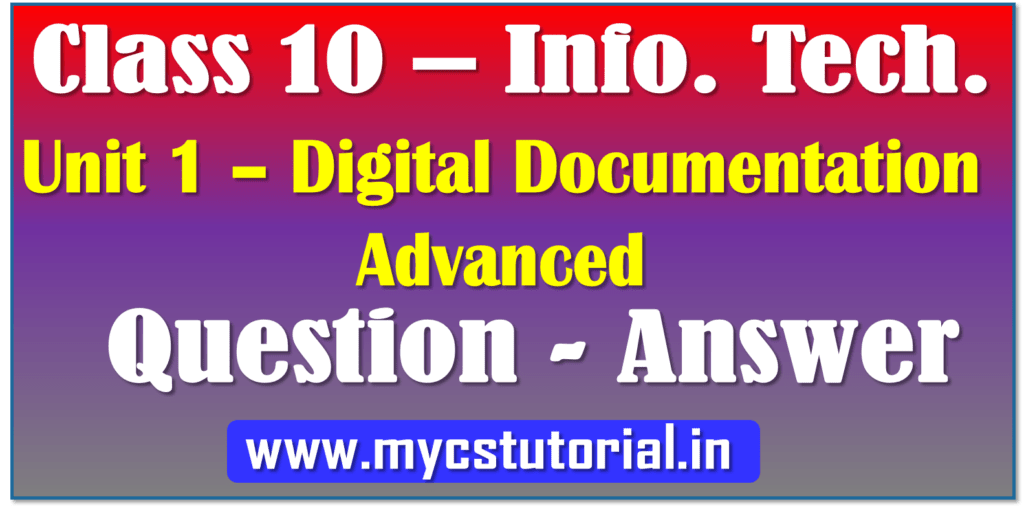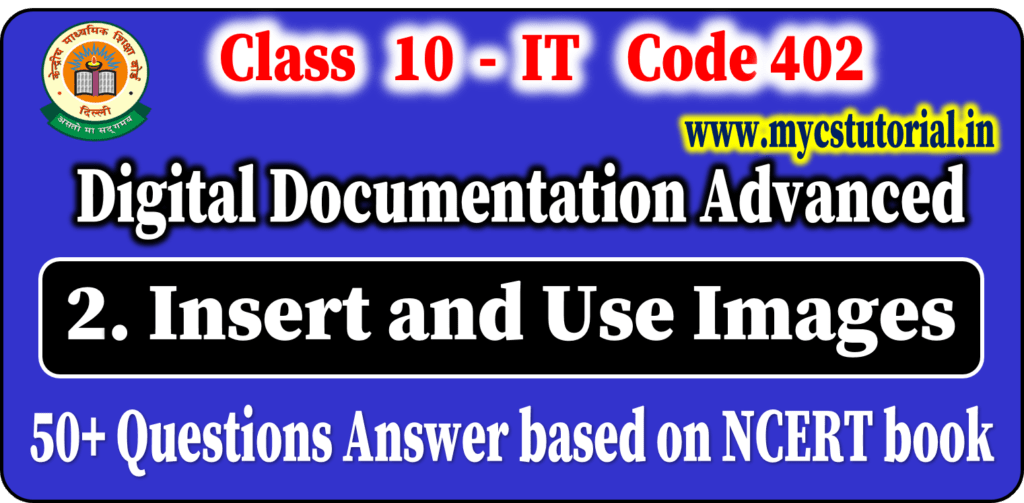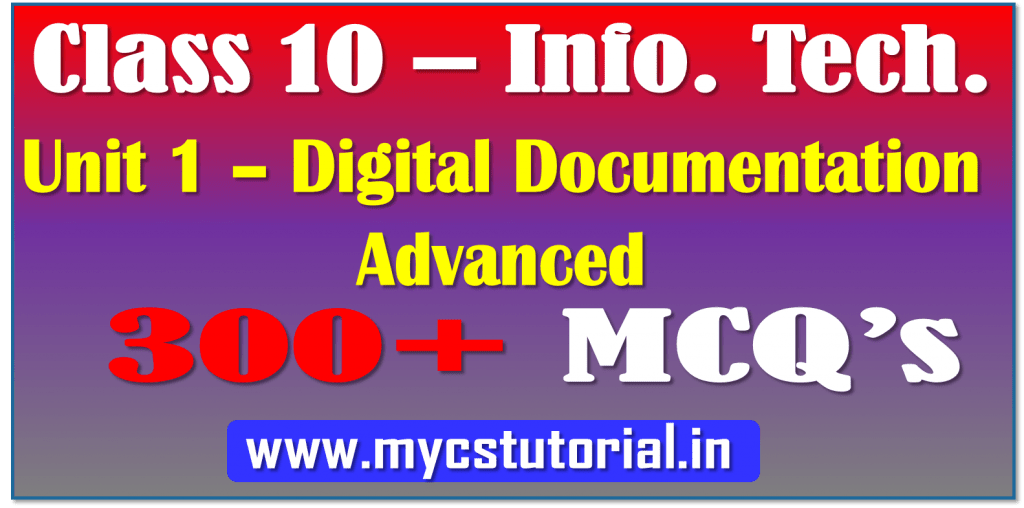Class 10 Information Technology [402]
Unit 3 Relational Database Management System
300+ Important Question Answer based on NCERT book.
Session 1 – APPRECIATE CONCEPT OF DATABASE MANAGEMENT SYSTEM
NOTES in form of Question Answer
1. What is Database?
Answer: An organized collection of data is called a Database. It is a container of information.
2. Give the example of three RDBMS Database programs?
Answer: Microsoft Access, OpenOffice.org Base, MySQL, Oracle.
3. What is the full form of DBMS & RDBMS?
Answer: DBMS:- Database Management System.
RDBMS:- Relational Database Management System.
4. When was the Database Concept evolved and Why?
Answer: The database concept has evolved since the 1960s.
DBMS concept has evolved to ease increasing difficulties in designing, building, and maintaining complex information systems (typically with many concurrent end-users, and with a large amount of diverse data).
5. What do you mean by Database Management System?
Answer: A database management system is a software package with computer programs that control the creation, maintenance, and use of a database. It allows organizations to conveniently develop databases for various applications.
A database is an integrated collection of data records, files, and other objects.
A DBMS allows different user application programs to concurrently access the same database.
6. Give the example of well know DBMSs?
Answer: Well know DBMSs are:- Oracle, IBM DB2, Microsoft SQL Server, Microsoft Access, PostgreSQL, MySQL, FoxPro, and SQLite.
7. In how many ways you can organize the data?
Answer: Data can be organized in two ways:- (a) Flat File and (b) Relational File.
8. What is Flat-file?
Answer: When data is stored in a single table, called a flat-file. It is suitable for less amount of data.
9. What is a Relational file?
Answer: When data is stored in multiple tables and the tables are linked using a common field, called Relational file. It is suitable for medium to a large amount of data.
10. What are Database Servers?
Answer: Database servers are dedicated computers that hold the actual databases and run only the DBMS and related software.
11. How to access the database stored on the Database Servers?
Answer: Database available on the database servers are accessed through command line or graphic user interface tools referred to as Frontends.
12. What do you mean by frontends?
Answer: Frontend is an interface that helps in accessing the data or information from the database servers. It is like a Forms, which can be designed in OpenOffice.org base, Microsoft Access, or any other programming language like Java, PHP, etc.
13. What do you mean by backends?
Answer: Database server is known as Backends. Backends are responsible for storing data and providing data whenever the application program requires it.
14. What is the client-server model?
Answer: Client-Server model is based on frontends and backends. Front-ends is a client who makes the request to the server and backends are the server, who provides the details or data or information to the front-end i.e. clients.
15. What are the disadvantages of a typical fill processing system?
Answer: Typical file processing has the following disadvantages or limitations:-
a) Data redundancy
b) Data inconsistency
c) Insecure data
d) Incorrect data
e) Unsharable data
f) Unstandardized data
16. What are the advantages of DBMS?
Answer: Advantages of DBMS are:-
(a) Reduces Data Redundancy
(b) Sharing of Data
(c) Data Integrity
(d) Data Security
(e) Privacy
(f) Standardization of Data,
(g) Data Consistency
(h) Backup and Recovery
17. What do you mean by Data Redundancy?
Answer: Duplication of data is called Data Redundancy.
18. What do you mean by sharing data?
Answer: Multiple users can access the same data stored on the Database Server. Many remote users can access the data. This is called Sharing of data.
19. What is Data Integrity?
Answer: Data Integrity means that the data is accurate and consistent in the database. Data Integrity ensures that the data is correct and consistent in all the databases and for all the users.
20. What is Data Security?
Answer: Data Security means only authorized users can access the database.
If any unauthorized access to the database happens then it is a violation of integrity constraints.






